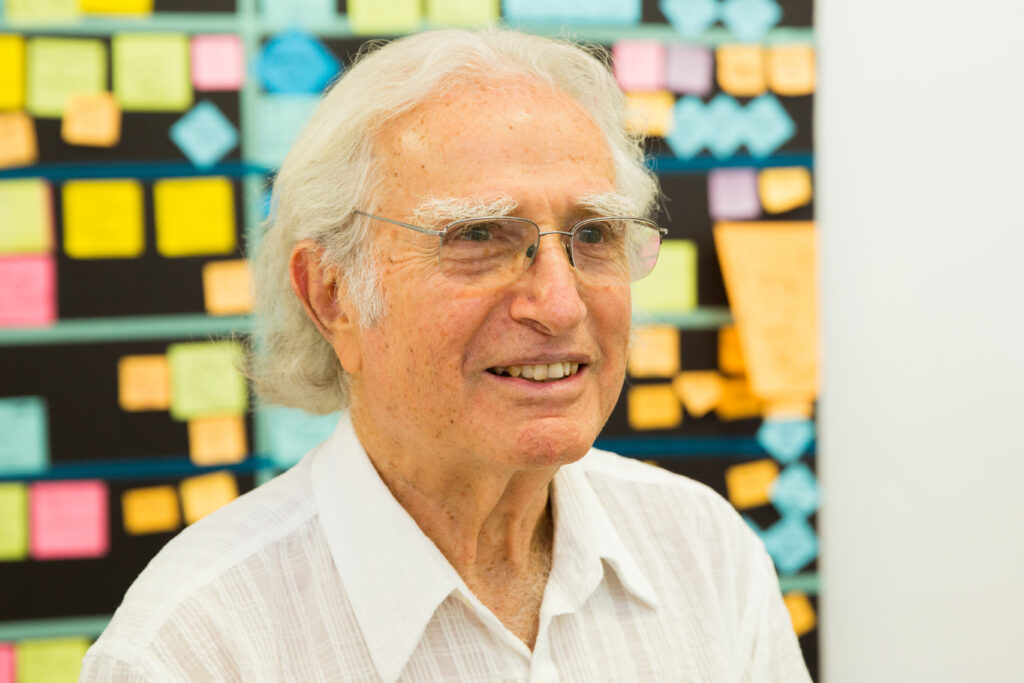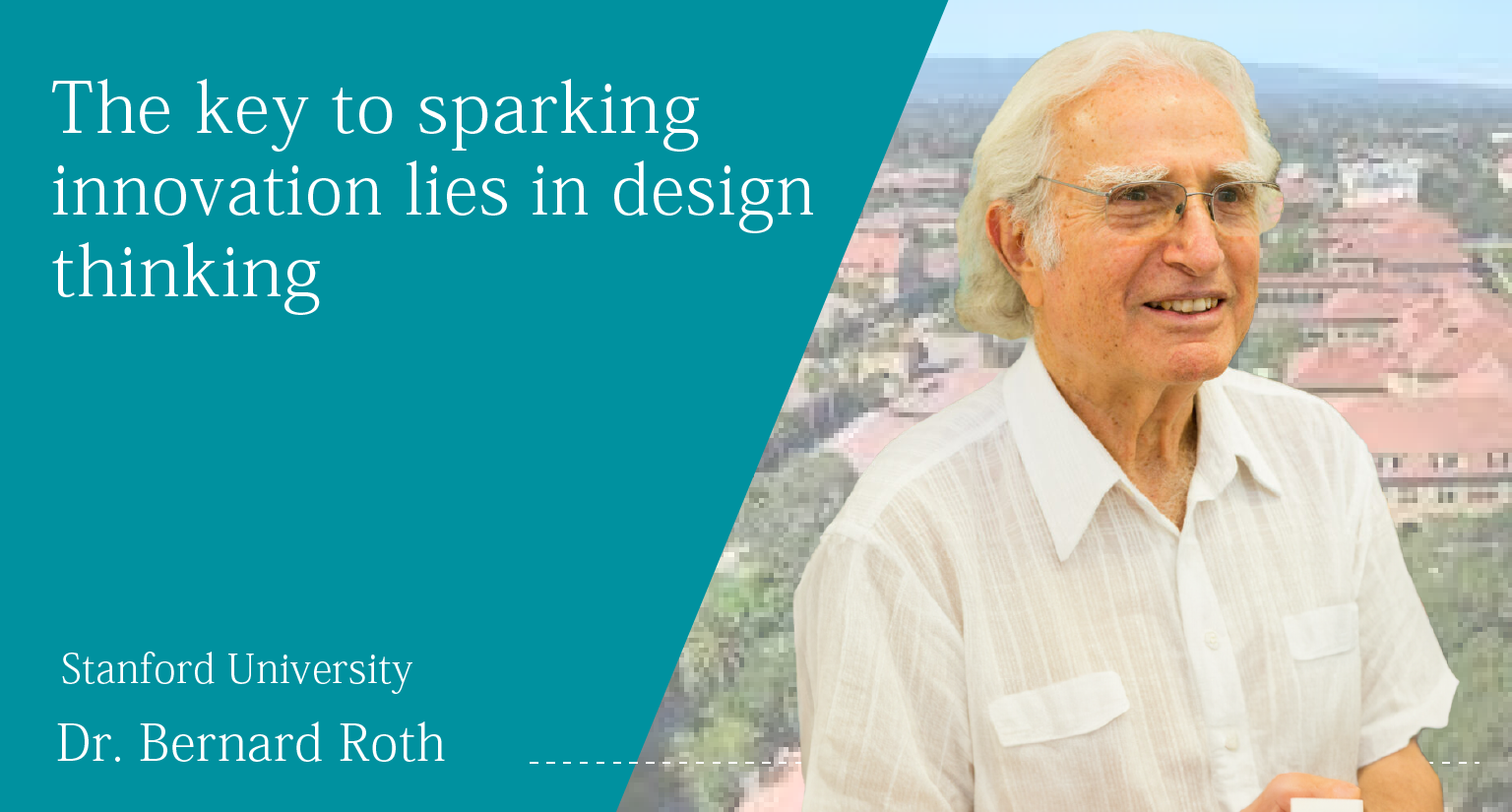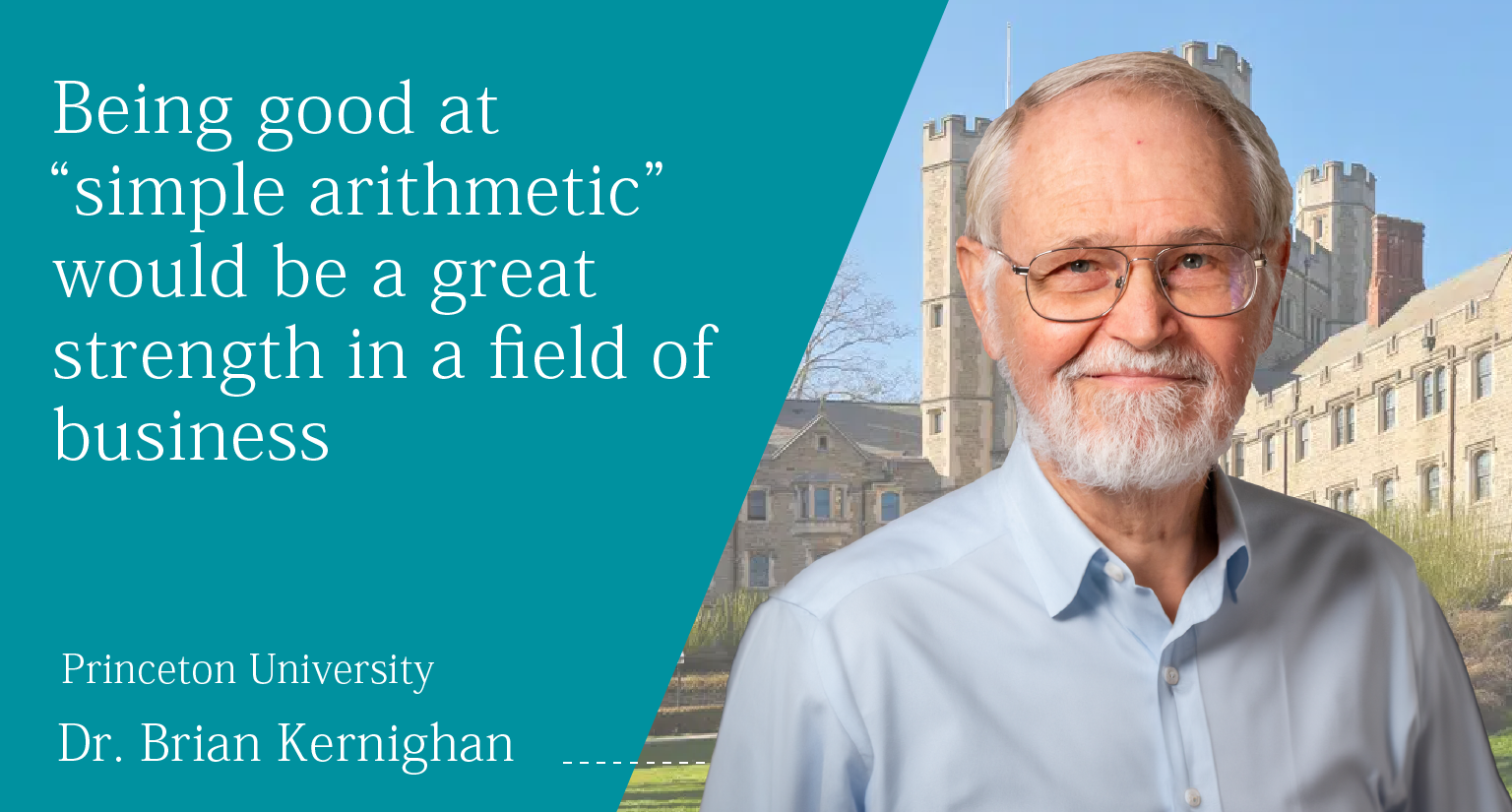In recent years, “design thinking” is becoming more and more popular in the corporate world, and many people may find it intriguing.
However, as it happens, learning design thinking techniques not only contributes to organizational management but also within an individual, making it more possible to succeed in one’s personal life.
Therefore, in this particular case, we had the opportunity to discuss design thinking with Stanford University Professor Bernard Roth, author of “The Achievement Habit: Stop Wishing, Start Doing, and Take Command of Your Life.”

Dr. Bernard Roth
The Rodney H. Adams Professor of Engineering at Stanford University
Doctor Bernard Roth is the Rodney H. Adams Professor of Engineering at Stanford University. He earned a Ph.D. degree in Mechanical Engineering from Columbia University and was awarded honorary PhDs by the University of Paris and the University of Cassino. He has published over 200 research papers and has received many awards for both his teaching and research. Additionally, he has served as a director of several corporations and is the organizer of workshops on creativity and personal effectiveness. He is also a co-founder of the Hasso Plattner Institute of Design at Stanford, commonly known as “d.school,” where he serves as Academic Director. His latest book, The Achievement Habit, has been translated into Japanese and 14 other languages.
Design thinking can be applied to solve any problem

Sato:
First of all, could you tell us what “design thinking” is?
Dr. Roth:
Applying the methods that designers have historically utilized to create designs for any challenge is known as “design thinking.” Although a precise description is difficult to give, designers have historically thought and generated ideas in a very different way than scientists or businesspeople. As a result, we decided to apply numerous unique design components to the solution-designing process.
Prototyping is one example of how concepts within the design thinking process are transformed through tangible validation and hypothesis. In design thinking, failure is not a concern. This philosophy, which we refer to as “No Fear of Failure,” places a strong emphasis on acting first and not being afraid of failure. While this mindset is not yet common in business or education, it has gained a lot of traction in the last 15-20 years and is now applied in a greater variety of settings.
In conclusion, design thinking can be defined as an approach to problem-solving and handling issues that applies techniques that were previously limited to designers, but have since been adapted and applied to a wide range of fields.
Sato:
In design thinking, what specific problems can be solved?
Dr. Roth:
In essence, any problem can be solved using design thinking. However, just as we cannot guarantee world peace forever, it’s not always possible to solve every problem with design thinking. There are major issues for which there are no obvious answers or ones that could take a very long time to resolve. However, the design thinking approach can work well for the kinds of problems that people in industry or academia typically tackle.
Initially, designers were associated with making tangible things. These days, though, organizations’ basic structures can benefit from the application of design thinking. In particular, design thinking can be applied to solve problems that go beyond creating tangible things, such as social systems that help the less fortunate or approaches to human interaction. Similarly, by applying design thinking to complex challenges, one can derive better solutions in a variety of situations.
The Secret to Achieving Excellent Solutions is Seeing Problems in the Right Way
Sato:
Could you also tell us about the specific process of design thinking?
Dr. Roth:
There is no one right way to approach design thinking; instead, different approaches are taken by many. At its core, human-centeredness is essential. Many traditional problem-solving methods, even those designed for humans, were not human-centered. In the past, approaches that were more mechanical or financial were more common; but in design thinking, it’s essential to first clarify “for whom” the solution is intended. Understanding “what the needs are” and “why the question needs to be asked” comes next.
To illustrate the difference between conventional thinking and design thinking, let’s consider a scenario where you, as my boss, instruct me, to do certain tasks and hand them over to you by tomorrow.
Traditionally, I would simply complete the assigned tasks and hand them over to you. But in the spirit of design thinking, I would gather more information about the assigned tasks, talk to more people, and, if there’s a possibility that the problem isn’t being looked at in the right way, communicate that to you. When I say, “What we want to solve is not B but A, and by solving A, we can achieve better results,” I can assist you in finding a better solution for the issue at hand, allowing you to approach problem-solving more effectively.
Sato:
I see. It’s about reexamining things from a new perspective.
Dr. Roth:
This type of thinking is known as “Reframing*.” In design thinking, we spend more time reframing the questions posed rather than focusing on answers. This is because if the question is posed incorrectly, even if an answer is found, it might not produce the desired outcome.
Through this kind of process, concepts come to you organically. While brainstorming to explore other ideas is part of it, there’s no constraint to adhere to a single idea. These concepts are used in design thinking to generate multiple prototypes, test them on real subjects to see how they work, and come up with solutions while gathering feedback. Sometimes the problem to be solved may change along the way, but it’s essential to first confirm whether the initially posed problem is correct. It is vital to test concepts with varying degrees of significance and, in the end, determine whether the entire solution functions properly.
Diverse techniques and tools are employed in design thinking. Some use a lot of sticky notes, while others prefer talking to someone or conducting surveys. Since there are many methods, choose the one that suits you best.
*Reframing: Unpacking the frame in which something is perceived and viewing it from a different perspective.
In business, there are numerous success stories resulting from the implementation of design thinking
Sato:
Thank you. Can design thinking be beneficial in business as well?
Dr. Roth:
As an example, in the course called Launchpad that we offer, participants can generate income within the first few weeks of the 10-week program.
In the past, designers used to hold the lowest positions in organizations. At the top of the company hierarchy were the president, and vice president, followed by the chief engineer, sales director, and employees, with designers positioned beneath them. Designers were considered individuals with artistic skills or specific technical expertise. However, in recent times, there have been cases where designers rise to the top leadership positions in companies. These companies have been incredibly successful because designers have a significant amount of decision-making authority and influence the dynamics and work methods of the organization at much earlier stages than in traditional processes. As a result, design thinking can be viewed as a flexible strategy that is helpful in many different business contexts.
Sato:
So, there are already successful business examples from using design thinking.
Dr. Roth:
Designers approach their work completely differently from those who have studied at business schools. Business school graduates typically take several years to come up with something, and their main focus is on planning and avoiding failure. Design thinking, on the other hand, emphasizes taking on new challenges regularly, accepting failure as a positive aspect, and learning from it. Failure teaches us a lot, and just because something works well doesn’t necessarily mean it’s the right approach. As a result, in design thinking, we verify whether the problem is correct, run experiments, and if we fail, we learn from it. This quick process allows us to move forward with ideas in various contexts, and in fact, what designers have created is used in many industries.
An earlier example is the once-very-popular BlackBerry mobile phone, which was a sophisticated gadget with great design. However, BlackBerry is no longer in production. It suffered greatly with the release of the iPhone. While BlackBerry was a technically superior phone, it couldn’t match the human interaction and the bond between the user and the device that the iPhone offered. BlackBerry was engineered with an engineering mindset, while the iPhone was precisely a product created with design thinking. Thus, a small change in ideas can make a significant difference in products, companies, and your work. Although there are many situations in which success is attained, there are also times when things may not work out.
If you are seeking better changes, you should incorporate design thinking
Sato:
Thank you. Finally, could you please share a message with the readers?
Dr. Roth:
If what you’re currently doing is working well, then please continue. On the other hand, you ought to experiment with new approaches if you’re hoping for a change or an improvement and, like everyone else, you just want things to get better. One of these methods is design thinking, and if you decide to try design thinking, start by confirming whether you’re addressing the right problem. Most of the time, people approach the wrong problem in the beginning and end up not getting the desired results.
It’s also critical to think about whether the issue is being tackled from a human-centered standpoint. For example, children rejected the General Electric MRI machine, despite it being a technological marvel similar to the BlackBerry. To them, the MRI device looked like a metallic monster, and they were so scared that they needed to take sedatives to enter the device. Even though it worked technically, the failure baffled the designers. So, they decided to talk not only to engineers, physicians, and nurses but also to children, patients, and users of the MRI device.
During this process, they came across children who, due to chronic illnesses and spending their lives in hospitals, did not have the sports trophies that their siblings had. From this experience, those who were using design thinking came away believing that children needed adventures. They painted the room like a jungle, a ship, or a night sky full of stars. Children had to remain still to see the stars or hide from pirates. By turning the room where the MRI device was into an Adventure Series, children no longer needed sedatives. This is just one example, but it illustrates that small changes can yield big results.
Children residing in hospitals are not medical professionals, nurses, or parents; rather, they are children. The most important thing is understanding who the target of design thinking is. However, it may not be possible to achieve what I have discussed using business thinking alone. I want to encourage you to apply design thinking to your life because of this. You won’t regret it.
( Interviewer: Naoto Sato )









